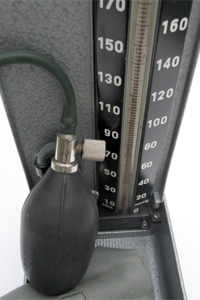Sympathoinhibitory Acupuncture for Hypertension interacts positively with anti-inflammatory EA alleviating blood pressure in hypertension
Kristen Sparrow • August 17, 2024

 We’ve discussed mechanisms of highblood pressure treatment here, but this article introduces the role of anti-inflammation as a mechanism also.
We’ve discussed mechanisms of highblood pressure treatment here, but this article introduces the role of anti-inflammation as a mechanism also.
Fu LW, Gong YD, Nguyen AT, Guo ZL, Tjen-A-Looi SC, Malik S. Sympathoinhibitory electroacupuncture (EA) interacts positively with anti-inflammatory EA alleviating blood pressure in hypertensive ratshttps://www.ncbi.nlm.nih.gov/pmc/articles/PMC10262041/. Front Cardiovasc Med. 2023 May 30;10:1140255. doi: 10.3389/fcvm.2023.1140255. PMID: 37324636; PMCID: PMC10262041
Abstract
Elevated sympathetic activity and chronic inflammation are known contributory factors observed in hypertension. We have observed that sympathoinhibitory electroacupuncture (SI-EA) at acupoints ST36-37 alleviates sympathetic activity and hypertension. Additionally, EA at acupoints SP6-7 exerts anti-inflammatory (AI-EA) effects. However, it is not known whether simultaneous stimulation of this combination of acupoints attenuates or enhances individual effects. A 2 × 2 factorial design was used to test the hypothesis that combining SI-EA and AI-EA (cEA) leads to greater reduction of hypertension by decreasing sympathetic activity and inflammation in hypertensive rats than either set of acupoints alone. Dahl salt-sensitive hypertensive (DSSH) rats were treated with four EA regimens including cEA, SI-EA, AI-EA, and sham-EA twice weekly for five weeks. A group of normotensive (NTN) rats served as control. Systolic and diastolic BP (SBP and DBP) and heart rate (HR) were measured non-invasively by tail-cuff. Plasma norepinephrine (NE), high-sensitivity C-reactive protein (hs-CRP) and interleukin 6 (IL-6) concentrations were determined with ELISA at the completion of treatments. DSSH rats on high salt diet progressively developed moderate hypertension within five weeks. DSSH rats treated with sham-EA showed continuous increase in SBP and DBP and elevations in plasma NE, hs-CRP, and IL-6 levels relative to NTN control. Both SI-EA and cEA decreased SBP and DBP, and had corresponding changes in biomarkers (NE, hs-CRP, and IL-6) compared with sham-EA. AI-EA prevented SBP and DBP elevation and decreased IL-6 and hs-CRP relative to sham-EA. Importantly in DSSH rats that received repetitive cEA treatment, SI-EA interacted positively with AI-EA leading to greater reduction of SBP, DBP, NE, hs-CRP, and IL-6 than SI-EA or AI-EA alone. These data suggest that by targeting both elevated sympathetic activity and chronic inflammation, cEA regimen results in a greater reduction of BP effects in treating hypertension compared to using individual SI-EA or AI-EA alone.
.

